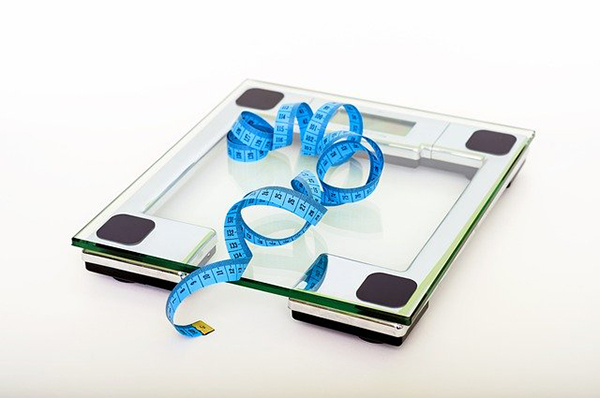What Our Biometric Health Screening Can Do for You!
Brought to you by the Living Well Alliance
In general, health screenings give you insight into your current health status so you can take charge of your health and get the care you need.
A biometric health screening measures physical characteristics such as height, weight, body mass index, blood pressure, blood cholesterol and fitness. This screening evaluates an individual’s health status and provides a benchmark that can be used to track changes over time.
Biometric health screenings offered by the Living Well Alliance are conducted by trained health professionals at your worksite. The screening examines your risk for diabetes and heart disease, two leading health issues facing Americans today. Due to their insidious nature, these chronic diseases often go undiagnosed. But with early screenings and regular primary care visits, they can be treated and managed—and sometimes avoided all together.
This Living Well Alliance biometric health screening is confidential, complimentary to employer groups and takes only 15 minutes per person. Participants also have the opportunity to ask questions of our registered dietitian or nurse.
Learn more about scheduling a worksite biometric screening for employees with the Living Well Alliance. You may also contact Christy Goff, RD, by email or at 206.621.4419
Try the Heart-Healthy DASH Diet
In the spirit of this heart-healthy month, let’s explore the DASH diet. DASH stands for Dietary Approaches to Stop Hypertension, which is another term for high blood pressure.
This eating plan is well researched for its powerful effect on lowering blood pressure by using food’s own nutrients (specifically potassium, calcium and magnesium). This is why the DASH diet recommends eating more—that is, more of foods that are high in these nutrients!
Specifically, the DASH diet encourages you to increase your intake of fruits and vegetables, whole grains, nuts and seeds, and legumes.The plan also encourages you to eat less—less salt, saturated fat, red meat, sweets and sugary beverages, all of which negatively affect blood pressure.
What’s the Big Deal with High Blood Pressure?
Blood pressure is a measure of the force of blood hitting against the walls of your arteries (the vessels around your heart). When blood pressure is too high (> 140/90) for an extended period of time, it puts too much strain on the heart, and the heart cannot effectively pump blood around the body. High blood pressure also contributes to atherosclerosis (the hardening of the arteries), which increases your risk for strokes and congestive heart failure, kidney failure and blindness.
Getting Started with DASH
A good way to start is to simply observe and keep track of your current eating habits. Write down what you eat, how much, when and why. You’ll quickly be able to see where you can start making changes. For example, just decreasing your salt intake while increasing your vegetable intake can have a big impact on lowering blood pressure!
Use these DASH guidelines to find a balance of more nutritious foods and less salty, processed foods.
Increase!
- More fruits and vegetables (4-5 servings of each per day). Choose fresh, frozen or canned with no salt added. * To increase flavor, sprinkle vinegar or citrus, add fresh or dried herbs or spices, and try salt-free seasoning blends.
- More whole grains (7-8 servings)—such as whole wheat bread/wraps/pasta, oatmeal and brown rice. Cook without salt, and cut back on instant or flavored mixes.
- More unsalted nuts and seeds (4-5 one-ounce servings per week). Add your own flavorings such as cinnamon for sweet or cayenne pepper for spice.
- More beans/legumes (1-2 servings per week). If canned, rinse to remove extra salt, and add lemon or lime juice to keep them tasty.
- More fresh poultry, fish and lean meat (rather than canned or processed types).
Decrease!
- Cut back on frozen dinners, pizza, canned soups or broths.
- Eat less of premixed salad dressings. Make your own with a mixture of olive oil and vinegar, plus a spice or two.
- Buy low- or reduced-sodium or no-salt-added versions of foods and condiments.
(The above recommended intake amounts for the DASH diet are based on 2000 calorie diet.)
Along with choosing a DASH approach to eating, you can make other lifestyle factors to decrease blood pressure. These include maintaining a healthy weight, being physically active, drinking less alcohol and taking prescribed drugs as needed. Talk with your provider! And learn more about the DASH diet at the American Heart Association site.
Recipe: Delicious Butternut Squash Soup
This colorful, mellow soup delivers vegetables and all their nutrients in a tasty, warm bowl.
Heart Attack and Stroke: Do You Know the Symptoms?
While crushing chest pain is the most recognized heart attack symptom in both men and women, as many as one-third of female heart attack patients never experience any chest pain.
Women’s heart attack symptoms may look different. Every woman should learn the signs of heart attack in females and take them seriously.
Most common heart attack signs in women:
- Chest pain or pressure
- Sudden shortness of breath
- Indigestion
- Sudden pain or discomfort in the back, arm, neck, jaw or stomach
- Sudden lightheadedness or cold sweats
- Sleep disturbances
If you have been experiencing unusual discomfort in your limbs or torso on a continual basis, call your doctor today. If any of these symptoms comes on suddenly, with no identifiable cause, call 911 immediately. Do not wait more than five minutes. Do not attempt to drive yourself for help.
Most common stroke signs in men and women:
- Sudden numbness or weakness of the face, arm or leg (especially on one side of the body)
- Sudden trouble speaking or understanding
- Sudden trouble seeing in one or both eyes
- Sudden trouble walking; dizziness, loss of balance or coordination
- Sudden severe headache with no known cause
With these stroke symptoms, call even if the signs have stopped. If treated within three hours, the long-term disability from some common types of stroke can be reduced or avoided.
Take Steps to Prevent Heart Disease
Heart disease is the top killer in the United States for many reasons, but you can fight back and take charge of your cardiovascular health.
First, what does heart disease refer to? Most people immediately think of issues caused by the hardening or narrowing of arteries. These include angina, myocardial infarction (“heart attack”) and sudden cardiac death. You might think of these as “plumbing” problems. Heart disease also refers to electrical problems such as irregular heart rhythms and mechanical issues such as heart valve problems. The heart has many integrated systems that all need to work well together for proper function.
The following recommendations apply to all types of heart disease.
1. Know Your Numbers
In study after study, the best treatments revolve around focusing on addressing the risk factors for heart disease. “Your numbers” are measurements of some key risk factors. Knowing your numbers and setting target goals is the first step in taking charge of your heart health. Talk with your primary care provider or cardiologist about these lab values and lifestyle factors:
- LDL and HDL
- Blood pressure
- Diabetes/HbA1c
- Body mass index
- Smoker?
You can even print a wallet size card to record your numbers and your goals!
2. Find a Communicative Doctor
Successful cardiovascular care depends on good communication. So if you are concerned about your heart health, take the time to find a cardiologist you can talk with. Your cardiologist should answer your questions and clearly explain your diagnosis, test results and treatment options.
Also, don’t be afraid to ask for a second opinion! Information is power, and getting a second viewpoint can help you make the right decisions.
3. Build a Team
Knowing that you are not alone in your fight for improved health can decrease stress and worry. Involve your family as much as possible; they can be an invaluable resource. Bring your friends on board too. They can support you in any diet or exercise goals you have.
Also, don’t be afraid to ask for a second opinion! Information is power, and getting a second viewpoint can help you make the right decisions.
Take Care of the Machine
Finally, recognize that your heart is an engine, working inside of a bigger machine. Treat the machine well by eating well, exercising and making sleep a priority. This will help bring your numbers to goal and keep you tuned into your health. (Be sure to consult with your primary care physician before starting a new exercise program.)
Learn more about the PacMed Cardiology team, or call 206.505.1300 for an appointment.
Recipe: Soothing Miso Soup
 Easy miso soup is full of healing vegetables and probiotics to help ward off winter illness. Any type of miso paste works; yellow or white offer a mellower taste, while red is the boldest, saltiest flavor.
Easy miso soup is full of healing vegetables and probiotics to help ward off winter illness. Any type of miso paste works; yellow or white offer a mellower taste, while red is the boldest, saltiest flavor.
5 Tips to Restore Harmony
- Evaluate your current work-life balance. Over the course of a week, monitor your daily tasks and activities, and take notes. This will give you a snapshot of your current situation and help you make a plan for moving forward.
- Use a calendar or to-do list as your personal assistant, to minimize the time you spend running in circles.
- Move your body. Book a series of “exercise dates” every week.
- Unplug from technology, especially at dinnertime and at least one hour before going to bed.
- Prioritize time for rest and recharging. Schedule activities that energize you—and be sure to get a good night’s sleep.
Sometimes we all need a helping hand. If you’re feeling stressed or like your life is out of balance, explore the treatment options provided by our Behavioral Medicine team.
Keep Fit as a Family
 Ever wish your kids would stop staring at a screen and be more active? You’re not alone.
Ever wish your kids would stop staring at a screen and be more active? You’re not alone.
The American Academy of Pediatrics (AAP) estimates that today’s children are spending an average of seven hours a day on entertainment media, including television, computers, phones and other electronics. By contrast, AAP recommends one to two hours of screen time a day.
Here are six simple steps to get your kids unplugged and moving.
- Make a family media plan—a written set of rules and guidelines.Include specifics about time limits, device curfews, guidelines for information not to be accessed or shared on the Internet, as well as consequences for not following house rules.
- Keep all screens in public spaces and out of bedrooms. Set up an “overnight charging station,” where everyone’s mobile devices are docked for the night and out of reach.
- Be a role model. Set a good example by curbing your own screen-use time. Replace it with family activities or exercise.
- Encourage and get involved in physical activities the whole family can enjoy. Go ice skating, cross-country skiing or sledding, or visit a community center for a swim or cardio class.
- Get outdoors and enjoy the fresh air. Venture out on a family hike, walk to a nearby park or go birdwatching.
- Teach your kids the nutritional value of food. Encourage healthy snacks and make sure your active family stays well hydrated by drinking plenty of water.
To learn more about PacMed pediatricians, or call for an appointment, 1.888.4PACMED.
Walk Your Way to Better Health
 Why let wintery weather sidetrack your exercise goals? It’s time to bundle up, put on your walking shoes and explore our spectacular scenery. Dr. Ari Gilmore offers this advice on how to get moving.
Why let wintery weather sidetrack your exercise goals? It’s time to bundle up, put on your walking shoes and explore our spectacular scenery. Dr. Ari Gilmore offers this advice on how to get moving.
One great aspect of walking is that you can do it in any weather—without investing in expensive equipment or joining an athletic club. Walking 30 to 60 minutes daily at a moderate pace burns fat, lowers blood pressure and strengthens bones, muscles and joints. It may also reduce risk for heart disease, type 2 diabetes, various cancers and osteoporosis.
If you are just starting a walking program:
- See your doctor if you don’t currently exercise, have diabetes or high blood pressure, or are over 65.
- Get fitted for a good pair of walking or running shoes.
- Dress in layers so you can respond to changing conditions.
- Stay hydrated. Carry water if it’s warm or you’ll walk for more than an hour.
When walking, don’t lean forward or backward. Stand straight, relax your shoulders, and bend your arms and swing them to add power to your walk. If you are feeling out of shape, start slowly and add a few minutes to your walk each date. If you have a pedometer or fitness monitor, begin with 2,000 to 3,000 steps a day and build from there.
If you experience pain in your feet or elsewhere, try resting up for a day. If you see swelling or bruising, treat it with rest, ice, compression and elevation (often referred to as RICE). If symptoms persist beyond 48 hours, make an appointment with your doctor.
Here’s to your winter explorations!
Vitamin D’s Positive Impact on Breast Cancer Survival Rates
Dr. Ari Gilmore, from Pacific Medical Centers’ Beacon Hill clinic, interviews with Q13 on vitamin D’s effect on breast cancer. Dr. Gilmore practices family medicine and is particularly interested in travel medicine, women’s health, sports medicine, pediatrics, and chronic diseases.











